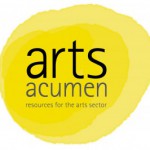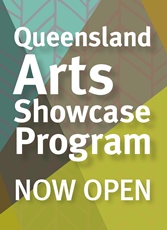
3 steps to preparing a budget
- 14 Oct 2015
Recently we published 10 tips to applying for funding. Budgets are an important element of any funding application. To help with this part of an application Arts Queensland has identified three key steps to consider when developing a budget…
Step 1. Determine your expenses
Costing your project to determine your expenses is critical. Common expenditure items include:
- Timeframes – Determine the length of project, critical work periods (this will help you estimate fees for participating artists and other personnel) and completion dates.
- Fees and living away from home allowances (per-diems) – Make sure you are aware of arts industry awards when you are negotiating with artists and that you are budgeting appropriate rates.
- Travel – The more you can plan in advance the better rates you will get for air travel. For road travel, budget to reimburse participants for petrol and other related costs. Shop around for vehicle hire (truck/car). Travel is a competitive market and can be a source of in-kind support through discounts offered or a full sponsorship opportunity.
- Accommodation – Check for competitive rates (you may be able to negotiate a discount and this can be recognised as an in-kind contribution).
- Insurance – You may need to arrange public liability insurance. Some peak bodies offer advice and discounted insurance cover through their membership benefits e.g. Ausdance Queensland, Flying Arts Alliance
- Venue or rehearsal room hire – Any discounts offered or contributions made will not only save you money it will also provide evidence that your project is supported by others.
- Marketing – Be sure you have a plan to maximise the outcomes of your project and that you have allocated sufficient funds to cover contracted personnel, online and printed marketing materials. Strategic use of digital marketing can be cost effective. Most projects have a limited number of public outcomes – you need to be sure you are reaching the widest possible audience.
-
Administration, evaluation and reporting – (This is often overlooked or under-resourced in many project applications) Make sure someone in your team is responsible for managing all administrative aspects of the project:
- Financial: Payments to artist, hire agreements, travels insurances
- Evaluation: Ensure an evaluation plan is in place from project commencement (audience surveys and data capture)
-
Reporting: Understand the funding body’s outcome report requirements. Thorough and timely reporting at the conclusion of any project will enhance your reputation as a reliable applicant, worthy of future investment.
Step 2. Construct the income side of the budget
The more diverse (and realistic) your income sources, the more competitive you will be. Most grant programs will not provide 100% of project expenses. Depending on the nature of the project, keeping your funding request below 50% of the total cost could be an advantage. Other things to consider:
- Box office/participants fees – Estimates should reflect the nature of the project, your target market (their capacity to pay), venue capacity and any risks such as weather impacting on outdoor events. It is best to estimate conservatively. Shortfalls will potentially put your project into deficit and may be viewed negatively by your funding body.
- Other funding – Plan ahead. Be aware of funding programs available to you (and closing dates) from local, state and federal agencies. Confirmed funding from other programs will make your application more competitive.
- Sponsorship – It takes time to research and identity suitable sponsors or partners. Allocate appropriate time and resources to develop your proposal so that it aligns with the priorities of a potential partner. Even modest cash and/or in-kind contributions provide evidence that others see value in what you are doing and tells assessors you are organised and the project is viable. Information about corporate sponsorship can be found at Tips on attracting corporate sponsorship
- Crowd funding and other fundraising –To be successful in this competitive environment be clear about your unique selling points. For information about a crowdfunding campaign see Tips on running a crowdfunding campaign
Step 3. What should you seek from a funder?
The difference between income (from all sources including sponsorship) and expenditure is the amount of funding you should seek from the funder
At this point you can assess whether this project is viable. If one of your funding sources is not forthcoming, would you be able to proceed? Do you have a contingency plan?

Key considerations for budget preparation is a component of the Grant writing tool kit available on the Arts Acumen page. Whether you are new to applying for arts funding or you have submitted applications before, the toolkit has been created to guide you through the key components of funding applications and to help you understand how to build a clear and compelling case for funding.

Arts Queensland’s new Queensland Arts Showcase Program provides funding to support individuals, organisations or collectives to deliver vibrant and accessible arts and cultural experiences for Queensland. The Program is administered across three streams Arts Ignite, Arts Illuminate, and Arts Impact, and is a rolling fund, with applications accepted at any time. Click here for more info or to apply for funding.
Feature image: Free images/ melodi2 – mosaic patterned numbers

